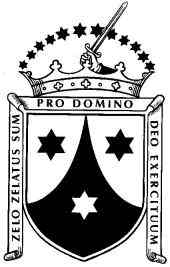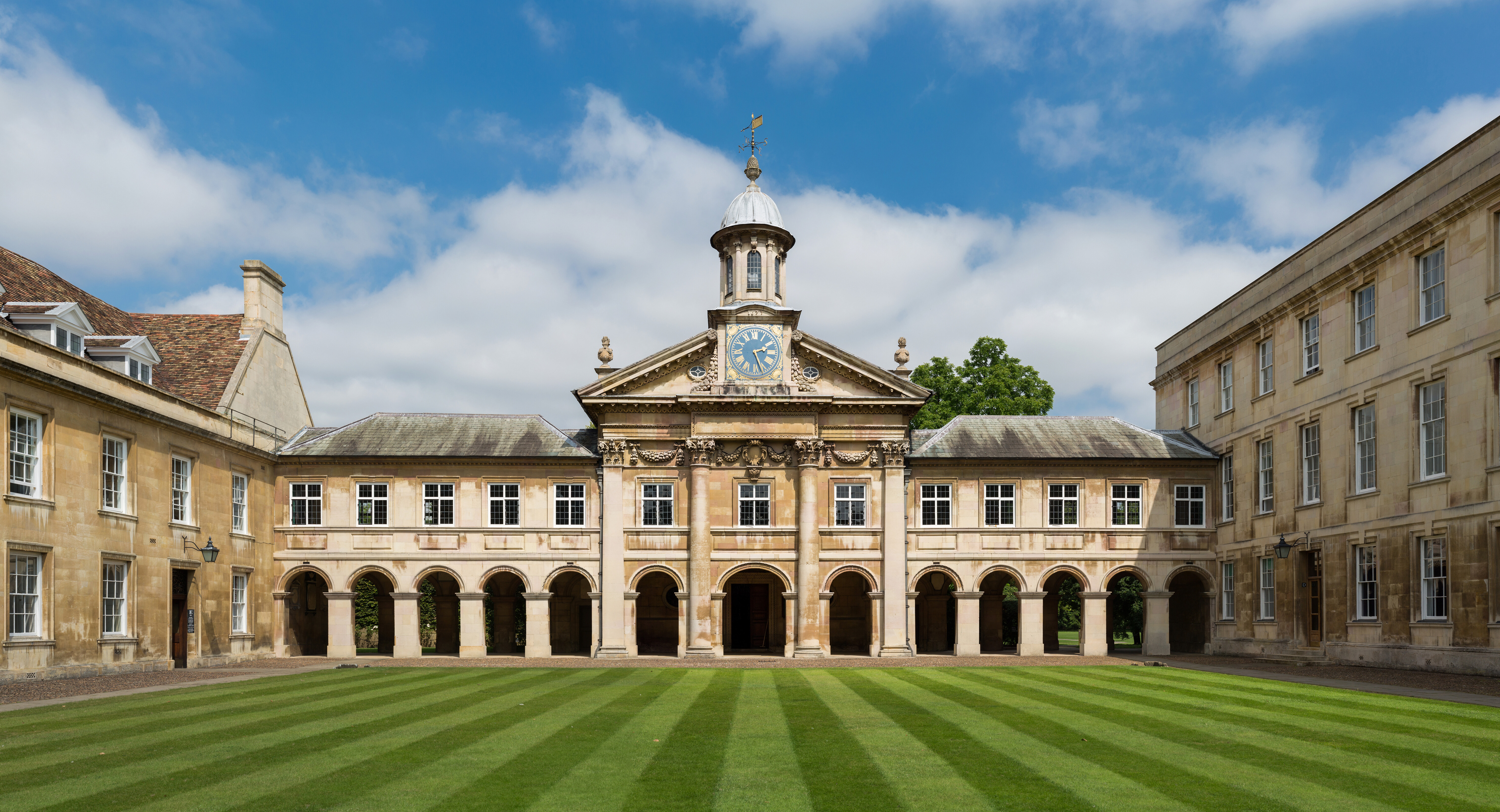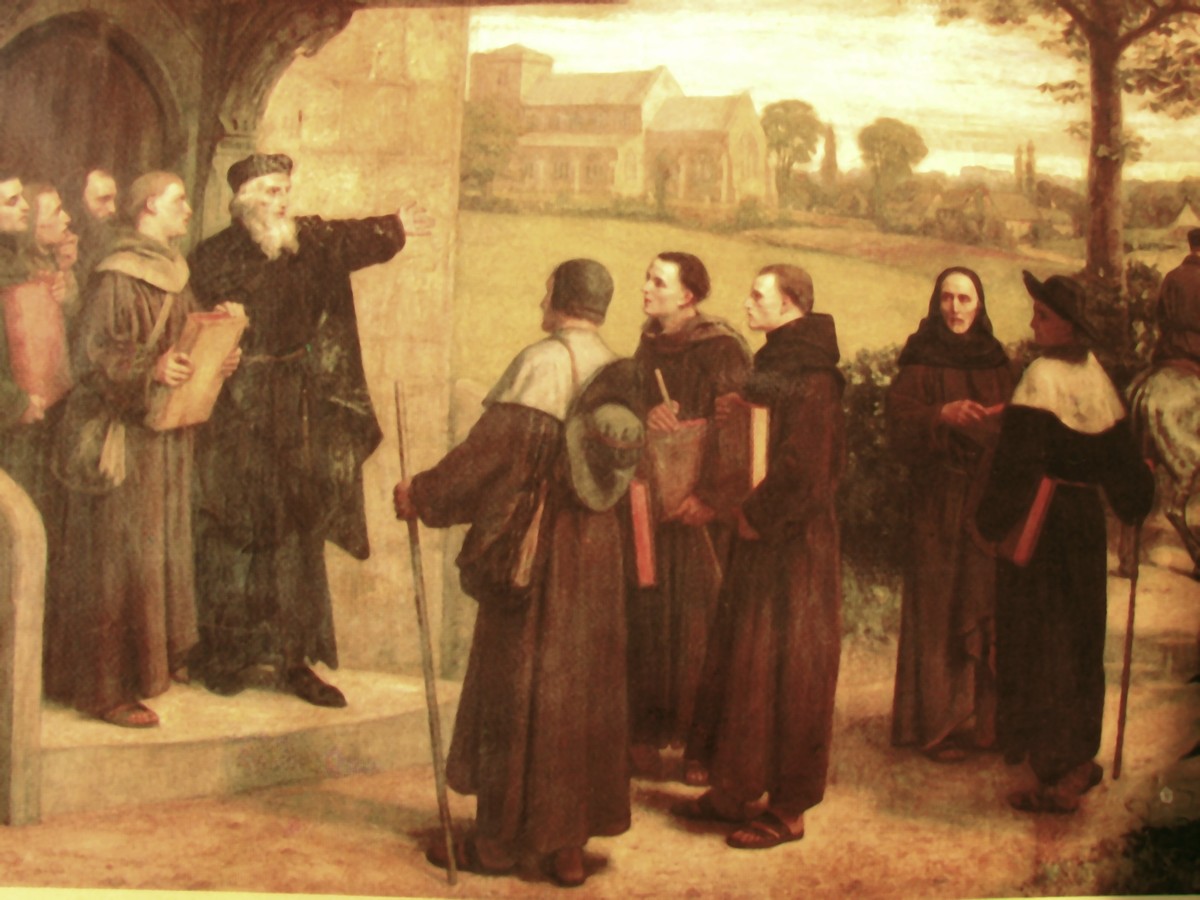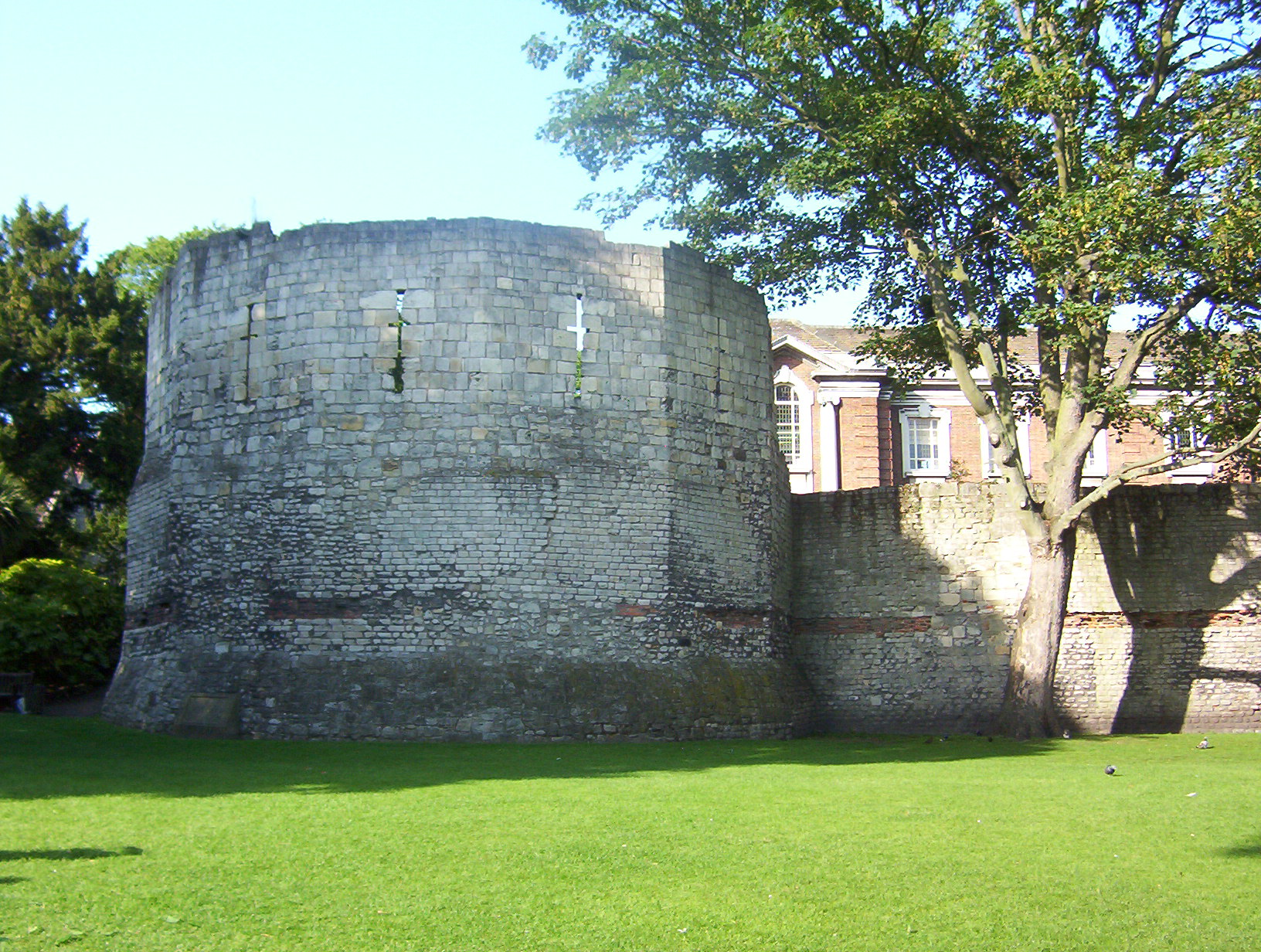|
Ipswich Whitefriars
Ipswich Whitefriars was the medieval religious house of Carmelite friars (under a prior) which formerly stood near the centre of the town of Ipswich, the county town of Suffolk, UK. It was the last of the three principal friaries to be founded in Ipswich, the first being the Ipswich Greyfriars ( Franciscans), under Tibetot family patronage before 1236, and the second the Ipswich Blackfriars ( Dominicans) founded by King Henry III in 1263. The house of the Carmelite Order of White Friars was established in c. 1278–79. In its heyday it was the home of many eminent scholars, supplied several Provincial superiors of the Order in England, and was repeatedly host to the provincial chapters of the Order. All three friaries were dissolved or suppressed in 1538, the Greyfriars in April and the other two in November. The Whitefriars stood south of the Ipswich Buttermarket street and mainly to the west of St Stephen's Lane, but nothing now remains visible above ground. The site was part ... [...More Info...] [...Related Items...] OR: [Wikipedia] [Google] [Baidu] |
Carmelite
, image = , caption = Coat of arms of the Carmelites , abbreviation = OCarm , formation = Late 12th century , founder = Early hermits of Mount Carmel , founding_location = Mount Carmel , type = Mendicant order of pontifical right , status = Institute of Consecrated Life , membership = 1,979 (1,294 priests) as of 2017 , leader_title = Motto , leader_name = la, Zelo zelatus sum pro Domino Deo exercituumEnglish: ''With zeal have I been zealous for the Lord God of hosts'' , leader_title2 = General Headquarters , leader_name2 = Curia Generalizia dei CarmelitaniVia Giovanni Lanza, 138, 00184 Roma, Italia , leader_title3 = Prior General , leader_name3 = Mícéal O'Neill, OCarm , leader_title4 = Patron saints , leader_name4 = Our Lady of Mt. Carmel, Elijah , parent_organization = Catholic Church , website = ... [...More Info...] [...Related Items...] OR: [Wikipedia] [Google] [Baidu] |
Edward I Of England
Edward I (17/18 June 1239 – 7 July 1307), also known as Edward Longshanks and the Hammer of the Scots, was King of England and Lord of Ireland from 1272 to 1307. Concurrently, he ruled the duchies of Duchy of Aquitaine, Aquitaine and Duchy of Gascony, Gascony as a vassal of the French king. Before his accession to the throne, he was commonly referred to as the Lord Edward. The eldest son of Henry III of England, Henry III, Edward was involved from an early age in the political intrigues of his father's reign, which included a rebellion by the English barons. In 1259, he briefly sided with a baronial reform movement, supporting the Provisions of Oxford. After reconciliation with his father, however, he remained loyal throughout the subsequent armed conflict, known as the Second Barons' War. After the Battle of Lewes, Edward was held hostage by the rebellious barons, but escaped after a few months and defeated the baronial leader Simon de Montfort at the Battle of Eve ... [...More Info...] [...Related Items...] OR: [Wikipedia] [Google] [Baidu] |
Cyril Of Constantinople
Cyril of Constantinople (d. c. 1235) was reputed to have been a Prior General of the Carmelites and prior of the hermits on Mount Carmel for three years. He is said to have had the gift of prophecy. Narrative Cyril was born in Constantinople around 1126, and reputed to have become a priest and hermit on Mount Carmel. One of the pseudo-prophecies, given out towards the end of the thirteenth century by the Franciscan Spirituals, and attributed to Cyril of Jerusalem, became known to Guido de Perpignan and other Carmelites at Paris, who ascribed it to their former general, now considered a saint and a doctor of the Church, his feast day being introduced in 1399. Zimmerman, Benedict. "St. Cyril of Constantinople." The Catholic Encyclopedia Vol. 4. New York: Robert Appleton Company, 1 ... [...More Info...] [...Related Items...] OR: [Wikipedia] [Google] [Baidu] |
Francis Peck
Francis Peck (1692–1743) was an English priest of the Church of England and antiquary, best known for his ''Desiderata Curiosa'' (1732–1735). Life He was born in Stamford, Lincolnshire, England, the son of Robert, merchant, and baptised 4 May 1692. He was educated at Stamford School and at Charterhouse School, before continuing on to St John's College, Cambridge. He was ordained as priest, 27 May 1716. After a curacy at King's Cliffe, Northamptonshire, he served as Rector of Goadby Marwood, Leicestershire, from 1723 until his death. He became a prebend of Lincoln in 1738. He wrote several books on history. In 1727 he published a history of Stamford called ''Academia Tertia Anglicana'' (Latin for 'the third English university' - a reference to the 14th-century Oxford schism in the town). He was elected to the Society of Antiquarians in 1732 and corresponded with many of the leading antiquaries and historians of the age; including Thomas Hearne, Browne Willis, Roger and S ... [...More Info...] [...Related Items...] OR: [Wikipedia] [Google] [Baidu] |
University Of Cambridge
, mottoeng = Literal: From here, light and sacred draughts. Non literal: From this place, we gain enlightenment and precious knowledge. , established = , other_name = The Chancellor, Masters and Scholars of the University of Cambridge , type = Public research university , endowment = £7.121 billion (including colleges) , budget = £2.308 billion (excluding colleges) , chancellor = The Lord Sainsbury of Turville , vice_chancellor = Anthony Freeling , students = 24,450 (2020) , undergrad = 12,850 (2020) , postgrad = 11,600 (2020) , city = Cambridge , country = England , campus_type = , sporting_affiliations = The Sporting Blue , colours = Cambridge Blue , website = , logo = University of Cambridge log ... [...More Info...] [...Related Items...] OR: [Wikipedia] [Google] [Baidu] |
John Wycliffe
John Wycliffe (; also spelled Wyclif, Wickliffe, and other variants; 1328 – 31 December 1384) was an English scholastic philosopher, theologian, biblical translator, reformer, Catholic priest, and a seminary professor at the University of Oxford. He became an influential dissident within the Catholic priesthood during the 14th century and is considered an important predecessor to Protestantism. Wycliffe questioned the privileged status of the clergy, who had bolstered their powerful role in England, and the luxury and pomp of local parishes and their ceremonies. Wycliffe advocated translation of the Bible into the common vernacular. According to tradition, Wycliffe is said to have completed a translation direct from the Vulgate into Middle English – a version now known as Wycliffe's Bible. While it is probable that he personally translated the Gospels of Matthew, Mark, Luke, and John, it is possible he translated the entire New Testament. At any rate, it is ass ... [...More Info...] [...Related Items...] OR: [Wikipedia] [Google] [Baidu] |
John Of Gaunt
John of Gaunt, Duke of Lancaster (6 March 1340 – 3 February 1399) was an English royal prince, military leader, and statesman. He was the fourth son (third to survive infancy as William of Hatfield died shortly after birth) of King Edward III of England, and the father of King Henry IV. Due to Gaunt's royal origin, advantageous marriages, and some generous land grants, he was one of the richest men of his era, and was an influential figure during the reigns of both his father and his nephew, Richard II. As Duke of Lancaster, he is the founder of the royal House of Lancaster, whose members would ascend the throne after his death. His birthplace, Ghent in Flanders, then known in English as ''Gaunt'', was the origin of his name. When he became unpopular later in life, a scurrilous rumour circulated, along with lampoons, claiming that he was actually the son of a Ghent butcher. This rumour, which infuriated him, may have been inspired by the fact that Edward III had not been ... [...More Info...] [...Related Items...] OR: [Wikipedia] [Google] [Baidu] |
Great Yarmouth
Great Yarmouth (), often called Yarmouth, is a seaside resort, seaside town and unparished area in, and the main administrative centre of, the Borough of Great Yarmouth in Norfolk, England; it straddles the River Yare and is located east of Norwich. A population of 38,693 in the 2011 Census made it Norfolk's third most populous. Its fishing industry, mainly for herring, shrank after the mid-20th century and has all but ended. North Sea oil from the 1960s supplied an oil-rig industry that services offshore natural gas rigs; more recently, offshore wind power and other renewable energy industries have ensued. Yarmouth has been a resort since 1760 and a gateway from the Norfolk Broads to the North Sea. Holiday-making rose when a railway opened in 1844, bringing easier, cheaper access and some new settlement. Wellington Pier opened in 1854 and Britannia Pier in 1858. Through the 20th century, Yarmouth boomed as a resort, with a promenade, pubs, trams, fish-and-chip shops, theatr ... [...More Info...] [...Related Items...] OR: [Wikipedia] [Google] [Baidu] |
York
York is a cathedral city with Roman Britain, Roman origins, sited at the confluence of the rivers River Ouse, Yorkshire, Ouse and River Foss, Foss in North Yorkshire, England. It is the historic county town of Yorkshire. The city has many historic buildings and other structures, such as a York Minster, minster, York Castle, castle, and York city walls, city walls. It is the largest settlement and the administrative centre of the wider City of York district. The city was founded under the name of Eboracum in 71 AD. It then became the capital of the Roman province of Britannia Inferior, and later of the kingdoms of Deira, Northumbria, and Jórvík, Scandinavian York. In the Middle Ages, it became the Province of York, northern England ecclesiastical province's centre, and grew as a wool-trading centre. In the 19th century, it became a major railway network hub and confectionery manufacturing centre. During the Second World War, part of the Baedeker Blitz bombed the city; it ... [...More Info...] [...Related Items...] OR: [Wikipedia] [Google] [Baidu] |
Narbonne
Narbonne (, also , ; oc, Narbona ; la, Narbo ; Late Latin:) is a commune in Southern France in the Occitanie region. It lies from Paris in the Aude department, of which it is a sub-prefecture. It is located about from the shores of the Mediterranean Sea and was historically a prosperous port. From the 14th century it declined following a change in the course of the river Aude. It is marginally the largest commune in Aude. But the capital of the Aude department is the smaller commune of Carcassonne. Geography Narbonne is linked to the nearby Canal du Midi and the river Aude by the Canal de la Robine, which runs through the centre of town. It is very close to the A9 motorway, which connects Montpellier and Nîmes to Perpignan and, across the border, to Barcelona in Spain. There is also a recently renovated train station which serves the TGV to Spain, Paris and Calais, which in turn connects to the Eurostar. Narbonne is only 10 km from Narbonne Plage (beach), but it ... [...More Info...] [...Related Items...] OR: [Wikipedia] [Google] [Baidu] |
Oxford
Oxford () is a city in England. It is the county town and only city of Oxfordshire. In 2020, its population was estimated at 151,584. It is north-west of London, south-east of Birmingham and north-east of Bristol. The city is home to the University of Oxford, the List of oldest universities in continuous operation, oldest university in the English-speaking world; it has buildings in every style of Architecture of England, English architecture since late History of Anglo-Saxon England, Anglo-Saxon. Oxford's industries include motor manufacturing, education, publishing, information technology and science. History The history of Oxford in England dates back to its original settlement in the History of Anglo-Saxon England, Saxon period. Originally of strategic significance due to its controlling location on the upper reaches of the River Thames at its junction with the River Cherwell, the town grew in national importance during the early Norman dynasty, Norman period, and in ... [...More Info...] [...Related Items...] OR: [Wikipedia] [Google] [Baidu] |
Lincoln, Lincolnshire
Lincoln () is a cathedral city, a non-metropolitan district, and the county town of Lincolnshire, England. In the 2021 Census, the Lincoln district had a population of 103,813. The 2011 census gave the Lincoln Urban Area, urban area of Lincoln, including North Hykeham and Waddington, Lincolnshire, Waddington, a population of 115,000. Roman Britain, Roman ''Lindum Colonia'' developed from an Iron Age settlement on the River Witham. Landmarks include Lincoln Cathedral (English Gothic architecture; for over 200 years the world's tallest building) and the 11th-century Norman architecture, Norman Lincoln Castle. The city hosts the University of Lincoln, Bishop Grosseteste University, Lincoln City F.C., Lincoln City FC and Lincoln United F.C., Lincoln United FC. Lincoln is the largest settlement in Lincolnshire, with the towns of Grimsby second largest and Scunthorpe third. History Earliest history: ''Lincoln'' The earliest origins of Lincoln can be traced to remains of an Iron Ag ... [...More Info...] [...Related Items...] OR: [Wikipedia] [Google] [Baidu] |








